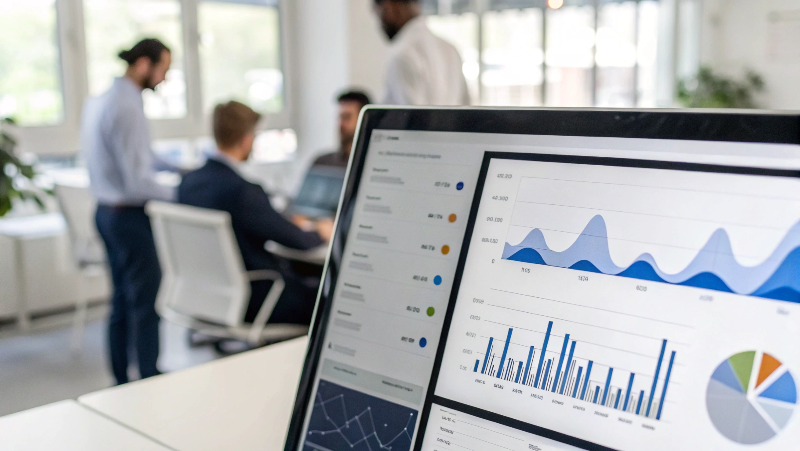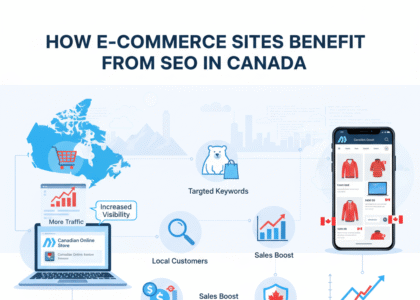You see dozens of hits on your dashboard, but no real names behind them. That lack of clarity forces you to chase unqualified leads and wastes hours in cold outreach. As results stall, frustration mounts, and your team questions every marketing dollar spent. However, you can turn anonymous clicks into clear prospects in seconds. By using tools that accurately identify B2B website visitors, you move from guesswork to targeted action. This shift ends wasted effort, sharpens messaging, and boosts conversion rates. In the following sections, you’ll learn how simple steps and innovative platforms reveal who’s behind each visit, so you can focus on high-value leads and drive real growth.
Why Raw Analytics Leave You in the Dark
Standard analytics provide insights into page views, sessions, and bounce rates. Yet they stop at numbers. You can’t see company names, firm sizes, or decision-makers. Therefore, you treat every hit the same. Consequently, outreach lacks precision. That approach drags down response rates and wastes resources. In contrast, when you identify B2B website visitors, you gain instant context. You know who’s looking, what they saw, and how to connect with them. Thus, you prioritize hot leads and skip the rest. This simple change transforms data into dollars.
How to Identify B2B Website Visitors with Ease
First, install a tracking script from a provider that specializes in B2B visitor identification. Next, set up real‑time alerts for matches to your ideal customer profile. For example, you might trigger a Slack notification when a mid‑market firm lands on your pricing page. Then, integrate these insights into your CRM so that reps can see firmographics and contact information at a glance. By following these steps, you ensure no visitor goes unnoticed. Moreover, you can test multiple solutions to find one that meets your speed and accuracy needs. This method ensures that you reliably recognize B2B website visitors every time.
Understanding Website Visitors vs New Users
Comparing metrics alone can mislead your strategy. Below is a table that highlights the key differences between totals from basic analytics and results after identifying B2B website visitors. Notice how the extra context shifts your approach:
| Metric | Basic Analytics | After You Identify B2B Website Visitors |
| User Count | Total sessions and users | Company-matched visits |
| Contact Visibility | Anonymous IPs | Firmographics and emails |
| Lead Prioritization | Based on page depth | Based on company fit and intent |
| Campaign ROI Measurement | Clicks and conversions | Revenue from targeted accounts |
This clear view ends the “website visitors vs new users” debate. You focus on real prospects rather than raw numbers.
Key Benefits of Identifying B2B Website Visitors
Here are the benefits of identifying B2B website visitors:
- Higher Conversion Rates: When you know the firm and role, you send tailored messages. Response rates climb and pipelines grow.
- Faster Sales Cycles: Teams reach decision‑makers directly. They skip gatekeepers and generic emails. Deals close sooner.
- Better Budget Allocation: Marketing spends target accounts most likely to convert. Waste drops and ROI rises.
- Actionable Insights: You see which pages drive quality leads. Then you optimize content and campaigns for top performance.
By focusing on B2B prospects, you refine every touchpoint and improve overall results.
Choosing the Right Visitor Identification Tool
When you evaluate platforms, look for:
- Instant Matching Speed: Data should appear in under 30 seconds.
- CRM Integration: Native connectors to Salesforce, HubSpot, and others.
- Data Accuracy: Verified emails and company details minimize dead ends.
- Compliance: GDPR and CCPA support to keep you safe.
Finally, run free trials with your own traffic. That way, you recognize B2B website visitors in your real environment and compare tools side by side.
Implementing Identification Without Disruption
Follow these steps:
- Install Script: Drop the JavaScript tag into your site’s header.
- Configure Filters: Set rules to exclude bots, internal traffic, and spam sources.
- Connect to CRM: Map fields to ensure that company, contact, and behavioral information flows into lead records.
- Train Your Team: Show reps how to act on alerts and update outreach templates.
This smooth rollout ensures you start seeing value in days, not months.
Measuring Success After Identification
Track these KPIs to confirm impact:
- Qualified Leads: Number of accounts matched vs total visitors.
- Conversion Rate: Deals closed from identified accounts.
- Time to Contact: Speed from outreach visit.
- Revenue per Lead: Compare Identified vs. Unidentified.
Regular reviews help you fine‑tune your filters and outreach sequences for maximum gain.
Conclusion
Stop relying on anonymous metrics alone. Instead, recognize B2B website visitors to instantly reveal company names, firmographics, and contact data. This clarity drives more innovative outreach, faster sales, and higher ROI. Use the steps above to pick the right tool, implement it seamlessly, and measure your success. Once you see real results, you’ll never go back to relying solely on raw analytics.
Ready to transform your lead gen? Sign up with identified.ai today to identify B2B website visitors instantly, boost conversion rates, and accelerate your sales cycles starting now!
FAQs
Is it hard to set up visitor identification tools?
No. Most platforms require a simple script install and a few configuration steps. You’ll see data in your CRM within hours.
Can I compare identified traffic to new users?
Yes. By comparing raw “new user” counts to identified visits, you see how many accounts truly match your ICP and adjust your strategy accordingly.
What privacy standards do these tools follow?
Top providers comply with GDPR, CCPA, and other regulations. They offer opt‑out options and detailed data sourcing transparency.






